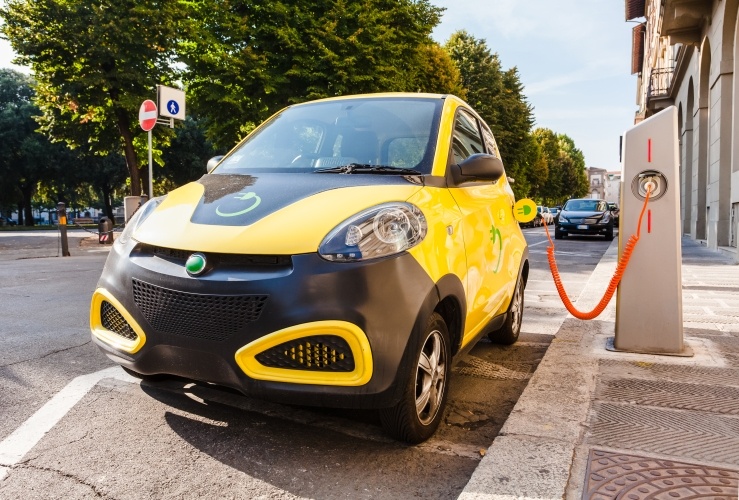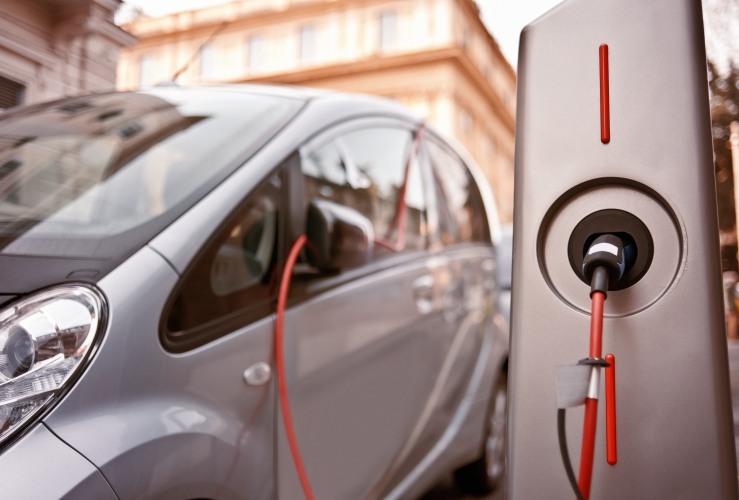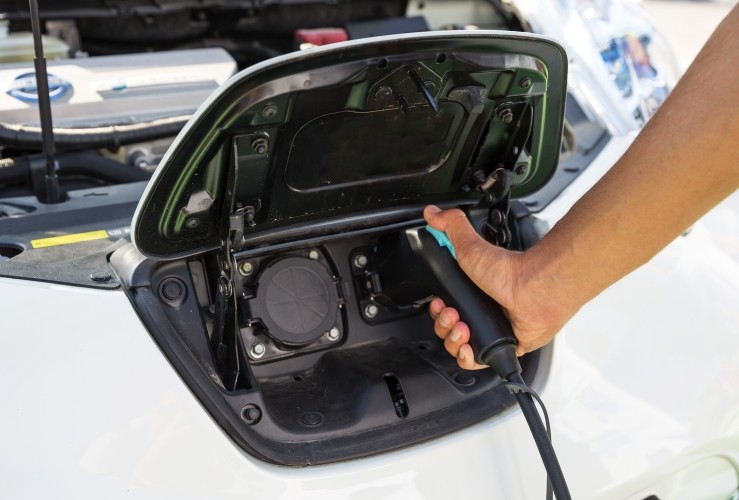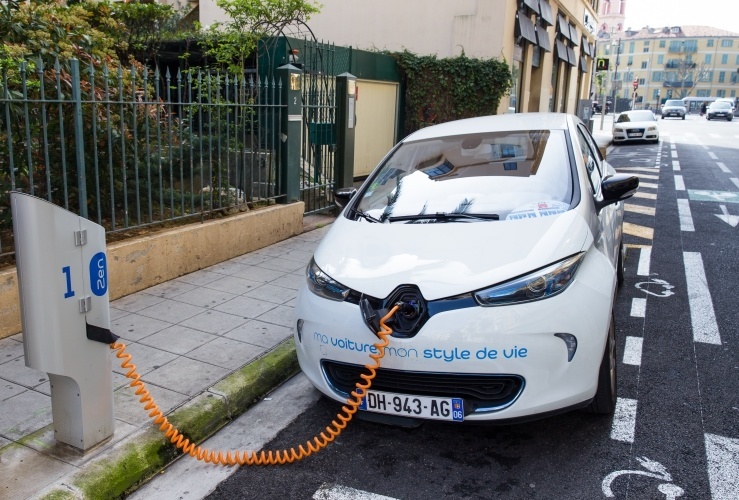The momentum behind electric cars continues in the UK and around the world. Government incentives and legislation, prompted by ambitious emission reduction targets and rising oil prices, mean that electric vehicles are an obvious replacement for petrol-driven cars.
That said, sales of electric cars are by no means vast. Up until January 2017, there were just over 7,000 electric and alternatively-fuelled vehicles registered in the UK, while the overall number of new vehicle registrations exceeded 174,000.

But as prices for EVs and EV hybrids come down – and assuming governments maintain grants and incentives for car makers – the electric vehicle is here to stay. Rather than a prophecy from transportation departments around the world, the electric car "revolution" is being consciously and forcibly pushed forward, albeit slowly.
Here we cover the electric car basics as they stand:
EVs are propelled by one or more electric motors which draw energy form electricity stored in batteries. Modern electric motors deliver smooth, high-torque acceleration and a comfortable ride. These batteries must be charged up - at the owner's home, or at a dedicated public charge point.
EVs are approximately three times more efficient than petrol-driven cars. According to the US government, “EVs convert about 59%–62% of the electrical energy from the grid to power at the wheels. Conventional gasoline vehicles only convert about 17%–21% of the energy stored in gasoline to power at the wheels.”
According to DrivingElectric.com, in one example using a Hyundai Kona Electric, the per-mile running cost was 2.7p per mile, while the diesel variant of the Hyundai Kona was 9.1p to run. So, as a rough guide, EVs are around three times cheaper - but that is without complicated calculations involving the cost of charging units, or the initial outlay itself.
Electric vehicles are considerably more expensive than combustion engine vehicles, but production costs are decreasing steadily. Moreover, the UK government offers grants to those buying a new electric vehicle, offsetting some of the initial outlay. The government offers a grant of up to £3,500 to anyone who wishes to buy an electric car. The list of eligible cars can be found here. The dealer automatically deducts the grant from the price, so you don't have to deal with any paperwork.
Sadly, the UK Government cut its plug-in grant by £1,000 in Apri 2019, which the car industry says was responsible for a 34 per cent fall in sales that month.
However, despite that, the cost of buying an electric car will become comparable to that of buying a combustion-engine vehicle very soon - in 2021, according to Deloitte.
Don't electric cars have poor range?

It’s true that most electric cars have a range of 80-100 miles on a full charge. However, for most people, this is enough for day-to-day motoring. For those who undertake longer trips, a combustion engine car is a more practical option.
Range has been improving every year. A smaller car like a VW e-Up will deliver a range of about 100 miles, while a bigger car like a Tesla 100D offers a range of up to 300 miles. As a rough guide, the average mass-market range is 150-200 miles. This compares to 300 to 400 miles for most petrol cars. In time, this gap too will close.
There are a variety of possible battery technologies that can be used to power an EV, but most plug-in hybrids and all-electric cars use lithium-ion batteries – the same type used in your mobile phone. Lithium-ion batteries offer superior range and fast charge times.

The most convenient way to charge an EV is in your garage, using a charging kit. However, new public-use electric charge points are popping up all the time. EV ownership is much easier if you have somewhere to store and charge your car overnight. A full charge at home will cost about £3.00, which, in a 30kW Nissan LEAF, would give you a range of about 150 miles. Pod-Point.com suggests an average 20 mile commute will cost a very agreeable 40 pence.
According to Zap-Map.com, there are now more than 23,000 connectors on more than 13,000 devices, spread across 8,591 locations UK-wide. There are now double the number of charge locations than in 2017. Chargers are generally categorised as slow, fast and rapid. Naturally, these are more expensive to use, but are still low-cost. Some locations offer free charging to their customers and visitors. Learn more about electric charge point coverage at Zap-Map.com.
Hybrid cars use two sources of power to propel them. In the world of automotives, this is nearly always petrol-electric or diesel-electric. Hybrids offer lower-cost motoring in urban or low-speed environments, but provide the range associated with a petrol/diesel car – meaning they are also suitable for long-distance trips.
Hybrid cars use electricity for slower urban driving and petrol or diesel for long distance trips. As well as being cheaper to run than pure combustion-engine cars, they are less polluting to urban areas.

There's no doubting that all-electric cars produce zero emissions – and therefore present an effective way of tackling greenhouse gases and pollution. However, an electric car's 'green' credentials may be affected by how the electricity is generated in the first instance. In areas where coal is still used to fire power stations, for example, EVs may indirectly contribute to CO2 emissions. But in areas where renewables are used, EVs maintain their environmentally friendly image.
While driving a zero-emissions electric car obviously has minimal direct impact on the environment, they have an indirect one. How much depends on how the electricity was generated in the first instance. For example, there are seven coal-fired power stations currently running in the UK; electricity generated by them does have an environmental impact. However, overall, much more of our electricity comes from renewables - particularly wind power. In 2017 27.9% of all the UK's electricity was generated by renewables
According to Energy-Uk.Org.Uk, an impressive 25% of the UK's electricity was generated with renewables in 2015, set to rise to 30% by 2020 if EU targets are met.
Production of any electric vehicle will also result in some CO2 emissions. Some critics suggest these are higher than regular petrol cars. However, the impact of how a vehicle is powered is of far greater consequence – and in that regard the electric vehicle is significantly greener than its combustion engine counterpart.
What many people do not realise is that the electric vehicle is as old as the petrol-powered car, with the very first concepts being drawn up in the 1800s.
A series of technological breakthroughs ranging from the battery to the electric motor led to the first electric vehicle taking to the road, with the invention of the lead-acid battery by French physicist Gaston Plante in 1859 seeing rechargeable batteries become a truly viable means for storing electricity on board a vehicle.
However, it was a Brit who built the first practical production electric car, when engineer Thomas Parker (who was also responsible for electrifying the London Underground) used specially-designed high-capacity rechargeable batteries to create the vehicle.
Across the Atlantic, the first successful electric car made its debut in the US around 1890 when Iowa chemist William Morrison created a six-passenger vehicle capable of a top speed of 14 miles per hour that sparked interest in electric vehicles.
It fed into the national conscious and the industry began to flourish over the next decade, with electric vehicles from several different automakers being created and New York City even having a fleet of more than 60 electric taxis.
At the start of the 20th century, electric cars accounted for around a third of all vehicles on the road and this continued for several years, until advances in the development of internal combustion engines saw petrol-powered cars slowly begin to surpass their electric counterparts.
Despite innovators such as Thomas Edison and Henry Ford researching the potential of electric vehicles, it was Ford himself who effectively dealt the death knell to the first phase of electric cars with the launch of the Model T in 1908.

Ford Model T 1908 (Lacroix/Bigstock.com)
By 1912, when Charles Kettering introduced the electric starter, petrol-powered cars were just one-third the price of electric cars.
Then by 1914, 99 per cent of the vehicles produced by American automobile manufacturers were powered by internal combustion engines, mirroring a global trend that saw the cars fall out of production across the world.
Interest did not reignite until the 1970s, when soaring oil prices and gasoline shortages, culminating in the 1973 Arab Oil Embargo, created an energy crisis.
Electric vehicles created during this period typically saw limited performance that meant speeds could only reach 45 miles per hour, whereas the typical range was limited to 40 miles before they needed to be recharged.
To put this into context, an electric car driven at top speed from Leeds would be unable to reach Sheffield without running out of power.
As such, electric car production entered another lull until the 1990s, when the issue of carbon emissions and the effect on the world's atmosphere and its inhabitants became a serious issue.
This development also facilitated a corresponding rise in vehicle insurance tailored towards cleaner emission vehicle types, together with the emergence of green breakdown cover policies from many of the major breakdown cover providers. This rise aligned with the increasing interest for an alternative cleaner fuel efficient vehicle.
The present
Across the world, the US is leading the electric vehicle charge, having added 117,000 cars last year and retaining the number one spot, while figures for China also spiked in 2014 with nearly 54,000 new electric vehicles added, which is an increase of around 120 per cent.
China's fleet of electric cars is now the third largest in the world, just behind Japan which saw a relatively slow yet still impressive 45 per cent growth rate last year, contributing to an annual global growth rate of 76 per cent.
In June 2015, the Renault-Nissan Alliance announced it had passed the milestone of 250,000 electric vehicles sold across the globe, with figures from renewables industry analyst the Centre for Solar Energy and Hydrogen Research Baden-Württemberg (ZSW) adding further support to this.

Renault Zoe (Semmick Photo/Bigstock.com)
It found that around 320,000 new electric vehicles were registered around the world in 2014, accounting for 43 per cent of all electric vehicles currently on the road, indicating that manufacturers are unwilling to rest on their laurels.
Despite this, there are still many barriers to the widespread adoption of all-electric vehicles; something that car makers are well aware of, and taking steps to eliminate in the coming years.
The future of electric cars
Electric cars are still relatively expensive, with the majority costing between £18,500 and £25,000 in the UK - even after the government’s plug-in vehicle grant of up to £5,000 is taken into account.
Similarly, the relative infancy of the recharging infrastructure remains a barrier to many potential electric motorists, with many UK drivers struggling to balance the low mileage range of the cars with the dearth of charging points.
In Estonia, fast public charging points on main roads are an average of just 37 miles apart, but the UK and many other nations are nowhere near this frequency at present.
However, shifting trends and legislation should go some way to helping solve some of the issues hampering all-electric vehicle manufacturers and their customers alike.
Renault believes that most customers require a practical range of around 300km [190 miles], which should be reached soon, without the need to spend a small fortune (like Tesla Model S drivers do, being able to travel 300 miles between charges but paying £70,000 upfront for the privilege).




